#──꒰ IC // CIVET ꒱
Explore tagged Tumblr posts
Text
@hoovedrycal asked: «POWERS» for the sender to use special powers to entrap the receiver. + reverse

──꒰ CIVET ꒱ ⚠️ 👾 ‼️ ・・・・・・
They've been staring at him from afar. What is he ? Their curiosity is what brings them closer to the being. Observing the man for almost an hour now in the midst of the forest. What was he doing here? Who is he ? What is he ? They stalk quietly through the grass. Blending into the darkness. Moving silently within the ever-loud forest noise as the sun starts to set down the rotation. They slowly move behind the being, and the minute they are close enough, they are quick to jump, lunging on top of him and grabbing his arms, forcing him to fall on his chest into the ground.
❛ Csesaz vah, ⠀❜ They say holding the man down on his back. A wicked smile is curved across their cheeks, showing their sharp teeth as they lean into the side of his face. They look like a curious wild beast, trapping its prey under their weight. The grip of their robotic arm surely assists in their physical strength for certain.
❛ Tell me, what are you ? ⠀❜
13 notes
·
View notes
Text

Oh to be a little power droid.




Gonky the defective GNK droid
1.13 Rescue on Ryloth
812 notes
·
View notes
Text
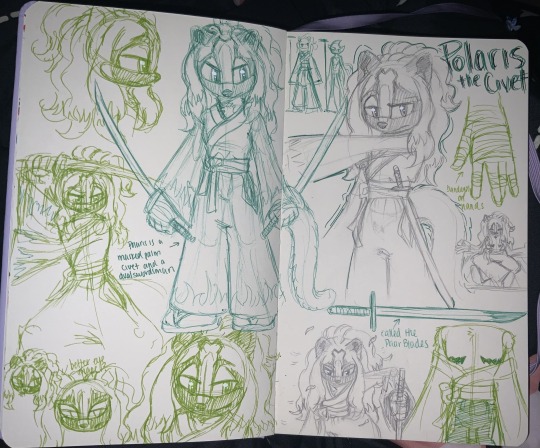
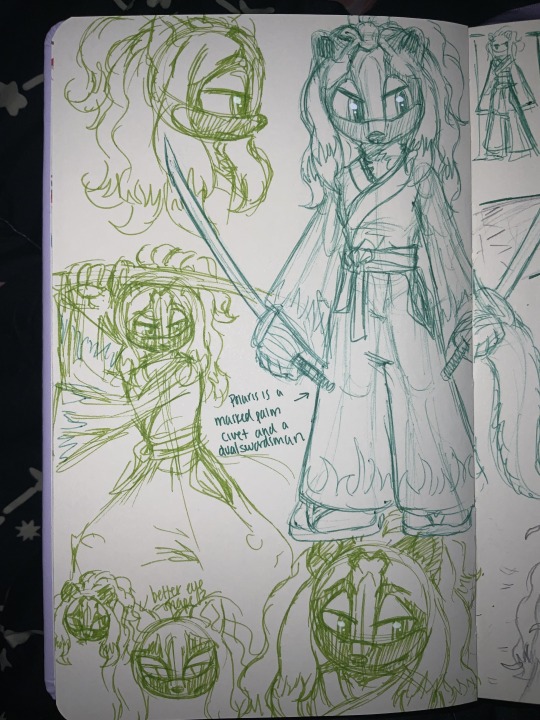
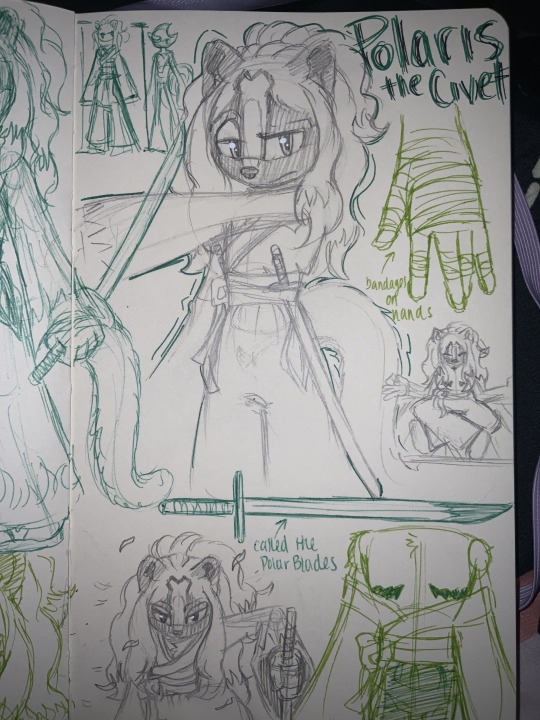
Polaris the Masked Palm Civet!!
This is the second character in my roster of Team Bastion!! Polaris is a dual swordsman with incredible martial arts skills. They are in fact trans 🏳️⚧️ and go by he/they. Polaris is the calmer, self aware, spiritual one of the group. He tends to be on the more level headed side and doesn’t like to engage much with others outside of his group. You could say they are introverted!!
Polaris’s powers are ice powers but they can only be channeled through their blades called the Polar Blades. It allows for great offense and defense. Polaris is also the tallest in the group and kind of towers over the other two.
When it comes down to it, Polaris is a very down to earth person who can always be trusted.
#artists on tumblr#sonic#sonic fanart#sonic fandom#sonic the hedgehog#silver the hedgehog#shadow the hedgehog#sonic oc#sonic fan character#traditional art#traditional drawing#sketch page#sketches#sketch dump#silvy’s ocs#original character#oc artist#oc#oc art#character art#character design
23 notes
·
View notes
Note
Important question: what would the Lowlifes’ coffee shop orders be?
Extremely important question.
Max: something something Civet something Oat Milk something Triple Shot something Extra Pumps. It's expensive for no reason and not very good. Max swears by it, but we all know he's an unreliable narrator.
Yak: the most sumptuous cup of cocoa that can be had. She'll settle for simple, but if there's a fancy hot chocolate to be had, they're having that, with whipped cream and sprinkles. If it's dark chocolate, all the bitter better.
Phoebe: She asks for a red eye and she doesn't blink. She asks for it with an extra shot, which I believe is called a black eye? Caffeine does not faze her. She gets to decide when sleep happens, not her body. It's not healthy at all.
Larkin: He is a giant iced coffee girlie, which is terrible both for his stomach and his nerves. If he is ordering alone, he'll get something like a nice chai latte. If he's not, he needs to save face.
Rukes: black coffee, one sugar. Milk is for people with time. And patience.
Today, ask me anything!
21 notes
·
View notes
Text
I like my lovers like I like my coffee (but increasingly more convoluted/nonsensical):
Piccolo 👽
Hot
Black with extra sugar 🥰
Flat White 🫦
Long black 😳
Ethically sourced ✊
Expensive tastes
Turkish 🇹🇷
Irish 🇮🇪
Columbian 🇨🇴
With extra cream🤤
Made in a Waffle House 🤭
Pinned on an hipster aesthetic Pinterest board 📷
Chocolate covered beans 🐾
Organic/vegan
Bulletproof
With buttered sourdough toast 🍞
Black Eye 🤬
Roasted in house 🔥
French pressed 🇫🇷
Thai iced 🇹🇭⛏️
Vietnamese iced 🇻🇳⛏️
Finally ground
Pumpkin spice/honey lavender
Cold brew
Pour over
With a pinch of table salt to cut the bitterness
Baked into a tiramisu
So scalding hot I need my panties surgically removed from my loins which results in a multimillion dollar lawsuit against a multibillion dollar corporation spun to defame me as a con artist.
Picked from civet scat
As an affogato
10 notes
·
View notes
Text
From now on, we will list the normal types.

NORMAL pure
Gibbon characterized as an opera singer.
Snake looking like a rope, tied in a knot.
Scared chicken, releasing its feathers to escape the predator.
Lizard that stretches its trunk, evolving into a more serpentine reptile.
Fish evolving and adapting to live on land into a mammal-like creature.
Coati with Groncho Marx disguise, uses the tail as a wig.
Hedgehog nurse, responsible for stitching wounds.
Hybrid of hare and tortoise, having the speed of the first and the protection of the second.
Civet with a slender body and skill in contortionism.
NORMAL/GROUND
Sandfish lizard looking like a walking fish.
Pig-nosed snake with X in its eyes, appearing to be crushed.
Puppy capable of sniffing bones and finding fossils.
Weasel or ferret that crawls on the ground like a snake.
Armadillo helping with construction work, its shell looks like a construction worker's helmet.
Mud pig with a vegetable garden on its back.
Cute-looking creature that lives in a bucket of sand.
Creature lying face down on the floor, looking like a dirty carpet.
Oyster chest keeping smaller shells inside.
NORMAL/GRASS
Mouse with petals on its head that it covers to hide its face.
Wooden alligator, camouflaged as a branch or log.
Lettuce creature, using its leaves to fan.
Straw scarecrow, made to take care of farms.
Instrumental mushrooms, making drum noises.
Eggplant chicken laying eggfruits.
Snake of medicinal herbs, inside a bottle of liquid, creating medicine.
Palm tree standing still during the day and walking at night.
Fox with a fluffy, colorful tail made of ornamental grass.
NORMAL/ICE
"Hairy" trout adapted its scales to look like hair and protect it from the cold.
Snow monster that creates huge ice balls.
Fox can slow down its heartbeat and survive frozen.
Lemming coming out of the snow like in the whack-a-mole game.
Polar anteater, predator of vanilittes, with a long tongue.
Creature transforming its voice into freezing waves.
Seal that lives in mountains, sliding down them like a sled.
Frog surviving inside a huge ice cube.
Animal covered by a skin that covers it, looking like a blanket.

NORMAL/FLYING
Bat singing melodies and even replacing route birds.
Animal with a long tail that turns it like a propeller.
Woodpecker sticking out his pointed tongue to hurt his opponent.
Bird with feathers on its head that look like a huge hat.
Wind elemental antelope, being blown as if leaping into the air.
Bittern imitating a strange monster to scare enemies.
Critter jumping from great heights; uses its skin as a parachute.
Collared lizard using its umbrella membrane to be carried by the wind.
Flying lemur looking like a hang glider when flying.
NORMAL/ROCK
Pet rock, actually a turtle hibernating in its shell.
Hirax carrying rocks with its large tusks.
Small compsognathus, the route "bird" of its time.
Sculptor-themed "Smeargle", with a chisel tail.
War horse made of stone, very resistant.
Mouse breaking rocks with its drill teeth.
Lizard with stone spines, can inflate itself like a blowfish.
Little monster juggling stones and being able to throw them.
Female Pokémon that is decorated with shiny jewelry.
NORMAL/WATER
Small toy dinosaur, absorbs water to grow.
Axolotl with spots resembling bandages on its body; it regenerates quickly.
Fire-type predator aquatic snake, resembling a hose.
Catfish making noises like a real cat.
Swimming Pokémon with inflatable organs to float.
Cetacean spraying explosive bubbles from the vent.
Literal frogman looking for sunken objects.
Fish that imitates a rubber duck.
Tambaqui very docile, appearing to behave like a dog.
NORMAL/STEEL
Goat with horns looking like saws.
Mechanical ballerina that plays music, like a music box.
Pig made of melted coins, sniffs metal.
Mouse with a tail like a key, looking like a toy.
Gerenuk with a neck covered in golden rings.
Small beings that help with construction and repairs, based on tools.
Snake with a spring body, moves by jumping and traps the victim by wrapping itself around it.
Gourmet Pokémon with cutlery limbs.
Creature with an organ like microphone that amplifies its sounds.

NORMAL/FIGHTING
Sheep using their wool as muscle padding.
Hunting dog with its attacks based on its large jaw.
Cartoon animal with elasticity and resistance abilities.
Fighter capable of inflating himself like a balloon and repelling physical attacks.
Breakdance dancer capable of rotating his body and limbs.
Greco-Roman wrestling turtle, pinning the opponent to the ground.
Monster carrying objects and throwing them at others.
Duck with wings shaped like boxing gloves, but soft as pillows.
NORMAL/FIRE
Animal with a flaming tail that it uses as a torch.
Turkey that breathes fire, warmed by its plumage.
Fire-breathing llama, warm with its wool.
Flaming chameleon with color changing fire.
Tapir sneezing fire after being exposed to the sun.
Lizard swallowing eggs and frying them in its throat.
Pie monster attracting prey with its scent.
Goat that breathes fire, predators of scorvillain, counterpart of the polar anteater.
Dancing mouse using matches as sticks.

NORMAL/ELECTRIC
Animal from very dark forests, can glow in the dark.
Lizard glowing in the dark to attract insects.
Furry animal using static from its fur to group together.
Dolphin used by sailors as radar.
Rabbit with pointy ears resembling tasers.
Pikaclone house mouse using its socket tail to steal energy.
Monkey that climbs electrical wires, helps electricians.
Reideer using its antlers to light paths at night.
Dinosaur toy that runs on batteries to gain energy.
FINAL LEGENDARY:
Mythological pure normal farm animal that fed the hungry in hard times.
Normal pokémon list completed.
3 notes
·
View notes
Text
@clonewar have the prompt: ‘ congratulations. you have pneumonia. ’ from tech for whichever of your ocs doesn't get sick often

──꒰ CIVET ꒱ ⚠️ 👾 ‼️ ・・・・・・
They find themselves staring at the intelligent clone like hes' crazy. They've never been sick before, why would they be now? Perhaps he was wrong. But, when has there ever been a moment where Tech of all people was wrong.
❛ Pneumonia ? As in, the lung infection, Pneumonia ? ⠀❜ They ask, as if the clone hadn't just said it five seconds ago. It is cause for panic, but Civet is far too confident that they aren't sick -despite the hard ability to breathe- that they refuse to let themselves start to panic over 'nothing.'
❛ No offense, bug, but i've never gotten sick my entire life. What makes you think i have Pneumonia ? ⠀❜ They ask, using the nickname 'bug' to be extra annoying. They once commented that his helmet makes him look like a little bug. And since, it's stuck. But they're certain he finds it annoying.
#──꒰ IC // CIVET ꒱#──꒰ OC // CIVET ꒱#──꒰ V // HACKER WARS ꒱#──꒰ CLONEWAR ꒱#──꒰ BARRACKBVNNY ꒱#──꒰ OOC // i think tech's helmet makes him look like a bug so all my ocs call tech bug i'm so sorry ꒱
8 notes
·
View notes
Text
Tag Game: 10 First lines challenge
Rules: Share the first line of your last ten published works or as many as you are able to and see if there are any patterns!
Thank you to @bloobluebloo for tagging me! I'm going to have to split my Life's a Zoo collection to get to 10 I think, lets see!
1. <a href=https://www.furaffinity.net/view/57529423/>Spa day for an Athlete</a>: Spots and stripes don’t normally go together.
2. <a href=https://ko-fi.com/s/453830cddc>Life's a Zoo: Horsefeathers Farm.</a>:Bradford Horsefeather was a horse of simple pleasures.
3.<a href=https://ko-fi.com/s/453830cddc>Life's a Zoo: A Coffee For Autumn</a>:The sweltering heat of Summer’s end steamed Nin, an olivine and cerulean asian palm civet, staved off the heat with a large cup of iced coffee as she tapped the rubber eraser of a pencil against a notepad.
4..<a href=https://snow-lupinwood.itch.io/tink-goes-to-rennards-free>Life's a Zoo: Tink Goes To Rennard’s</a>: The tall fluffy bright pink and yellow moth “eeru”-ed to himself as he took in the sun’s rays through the kitchen window.
5.<a href=https://ko-fi.com/s/453830cddc>Life's a Zoo: A Second Chance</a>:Club Penguin was the newest, trendiest, most hopping and popping nightclub on the scene.
6.<a href=https://ko-fi.com/s/453830cddc>Life's a Zoo: Coax the Beauty Out</a>:Oliver, a parti poodle with black spots and dye patterns reminiscent of a Lisa Frank artwork, bright rainbow gradients with stripes of complimentary colors woven in, grabbed his iced coffee and took a long savoring sip.
7. <a href=https://www.tumblr.com/snowlupinwoodstories/754028162441265152/writing-practice-1?source=share>Writing Practice 1.</a>Sam the jerboa moved quickly to catch his train before the doors closed and it left the subway station.
8.. <a href=https://www.tumblr.com/snowlupinwoodstories/754028162441265152/writing-practice-1?source=share>Writing Practice 2.</a>Liam adjusted his bowtie for the six-hundredth time, being sure to align the blue, purple and pink stripes so they were in the right orientation.
9.<a href=https://www.tumblr.com/snowlupinwoodstories/754028162441265152/writing-practice-1?source=share>Writing Practice 3.</a>“Spa Corps et Espirit?” The dusky purple hyena with pink, blue, and green rams horns questioned as she and her girlfriend, a shapely white wolf with ice blue eyes walked towards the modern looking building.
10.<a href=https://www.tumblr.com/snowlupinwoodstories/754028162441265152/writing-practice-1?source=share>Writing Practice 4.</a>The heat shimmered the air like the holographic scales of the dragon who sat on the metal bench in the park.
Biggest pattern I notice is I either use short sentences meant to set a mood, or I'm using a long sentence to give you a feel for the character and what they look like. Curious to see if this is something characteristic of my work as I improve!
tagging: @harpagornis @zzzzzestforlife @agirlandherquill and any other writers who what to get involved! Especially furry writers we need more of you
5 notes
·
View notes
Text
The search for Fursona (and myself)
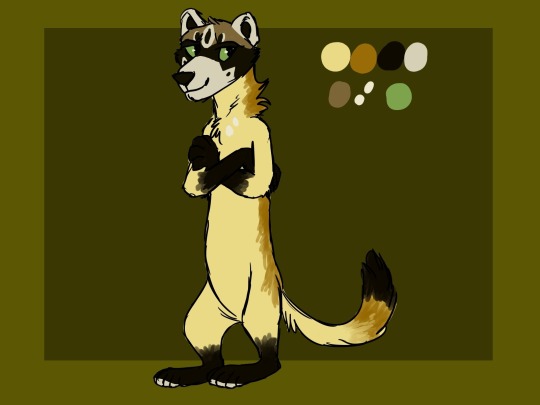
I started drawing anthropomorphic animals with a special enthusiasm since 2015. In 2020 I switched to digital drawing and decided to create a fursona. Actually this is her first appearance from the same year
She was an American ferret named Alma.
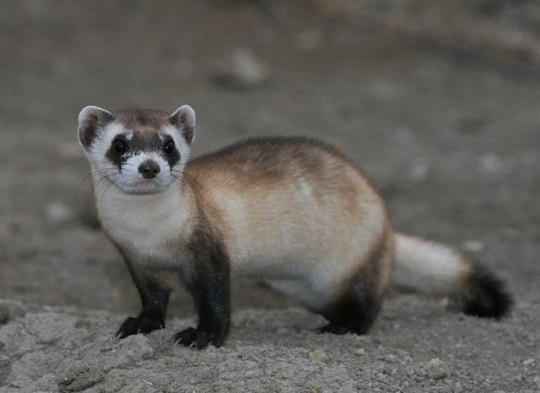
Her real life prototype
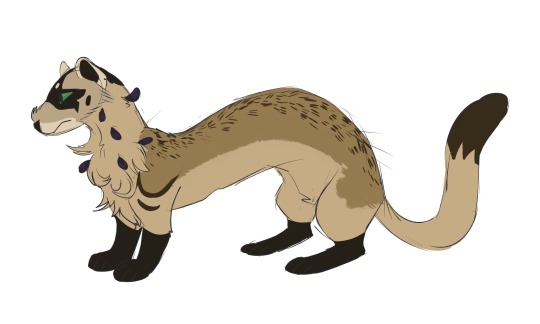
This design did not catch on in the aftermath I didn't feel like a ferret. They are flexible and long, and I needed something more massive. And I didn't feel connection with American fauna because I'd never been there. In 2022, Alma got a redesign and became fully separated from me. She's now a character in my planned comics, On Thin Ice, along with a bunch of other animals - Fergus the wolverine and Tot the palm civet.

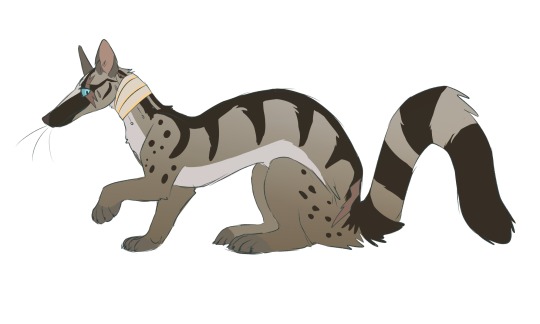
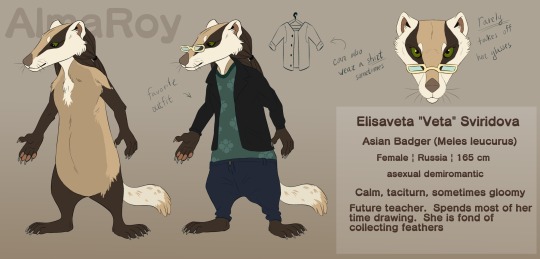
Sometime in late 2021, I redesigned Fursona. She was now an Asian (not European!) badger. I felt more of a connection with this species. They are quite massive animals, and even more so living where I live. And I've been called a "grumpy badger", so it was an obvious choice.
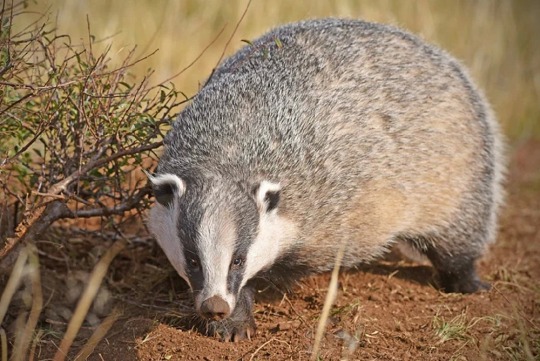
Asian badger Not to be confused with the European badger. They are different species (+ European badger does not live in Siberia, where I live).
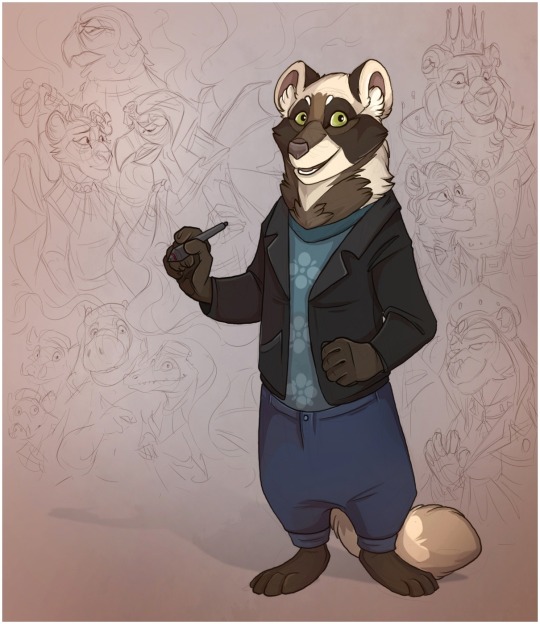
Author of drawing - FortunataFox (FA, Twitter)
But for all its perfection, the badger didn't stick with me either One of my friends, who knows a lot about animals and is a Terrian, when I asked her what kind of animal would suit me, she said a raccoon dog (but also noted that a badger also fits my personality). I started to become more interested in these animals and eventually the final image of Fursona became a raccoon dog.
Even though they're not native to my area. Raccoon dogs live in Russia, but east of here.
And her name is VESTA now (not Alma)
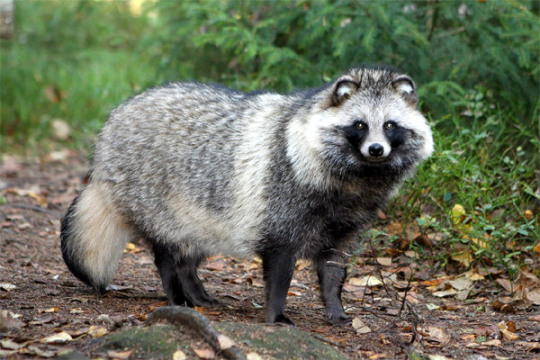
Raccoon dog (or tanuki)
Did you know that it is the only canine that hibernates in the winter?
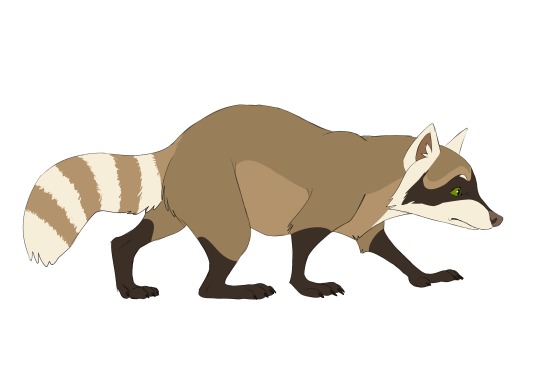
I drew her as just a raccoon once for a joke
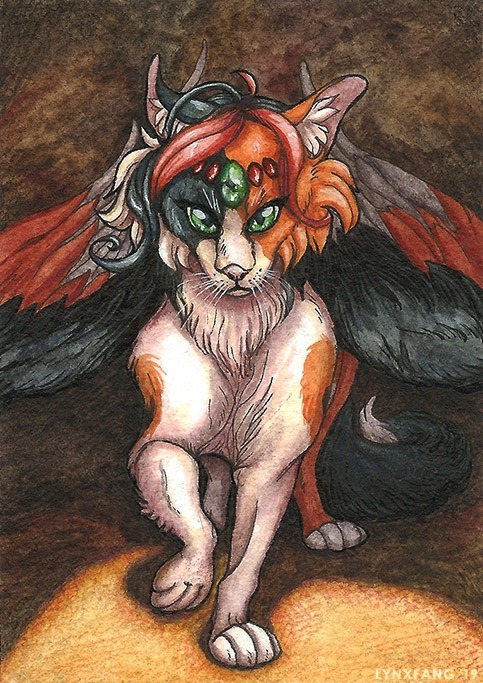
Author of drawing - Lynxfang (FA, Twitter)
As for my name on Tumblr ( Leia - cat with wings) - it's in honour of my character from 2017 who was never associated with me
#cartoon#digital art#traditional art#furry artist#furry anthro#furry character#furry community#fursona#canine#tanuki#mustelid#ferret#badger#thoughts#personal#long reads#meet the artist
6 notes
·
View notes
Text
Cultural Highlights: Everyday Oddities in Vietnam
Vietnam is a land of rich traditions, vibrant culture, and unique customs. From decorative crosswalks that seem more symbolic than functional to streets bustling with motorbikes and vendors selling diverse goods, the country offers many vibrant and distinctive experiences. While some practices might seem quirky to outsiders, they reflect the fascinating daily life of the Vietnamese people. Let’s explore five strange but captivating things people do in Vietnam.
1. Drinking Coffee Made from Poo
One of Vietnam’s most unusual culinary traditions is savoring “weasel coffee,” also known as cà phê chồn. This unique brew originates from coffee cherries that have been eaten and excreted by civets. Despite their carnivorous nature, these creatures are known for their knack for selecting the ripest coffee berries. After being excreted, the beans are thoroughly cleaned and roasted to produce coffee renowned for its smooth, rich taste.
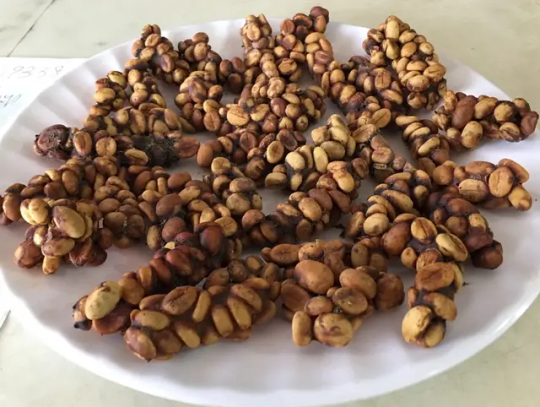
Though its origins might raise eyebrows, weasel coffee is a delicacy and a must-try for adventurous coffee enthusiasts.
Don’t be surprised:
The price for 250 grams of weasel coffee can range from 1,000,000 VND (about $40) to 17,000,000 VND (about $670).
2. Drinking Beer with Straws and Ice
In Vietnam, especially in the south, it’s common to see people drinking beer with straws and adding ice cubes. This practice may seem unconventional but has practical and cultural roots. Some locals believe using straws helps maintain the beer’s cold temperature, while others find it enhances the flavor.
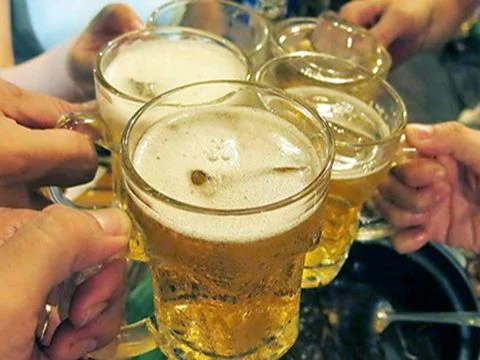
Adding ice keeps the beer cold longer and slows down intoxication, enabling people to enjoy extended conversations and camaraderie over drinks.
3. Wearing Pajamas in Public
In Vietnam, especially in the central and southern regions, wearing pajamas as casual streetwear is a common and practical sight. Known locally as đồ bộ, these brightly colored and patterned pajama sets are a favorite among women and children.

The lightweight fabric and loose fit make them ideal for Vietnam’s hot and humid weather. Locals wear them while shopping, visiting neighbors, or even running errands. What might seem unusual to outsiders is simply a comfortable, practical, and culturally accepted choice for many Vietnamese people.
4. Smoking Bamboo Tobacco
Another unique Vietnamese custom is smoking tobacco from a bamboo water pipe, a practice known as thuốc lào. This traditional method involves a large bamboo pipe filled with water, which cools the smoke as it’s inhaled. The tobacco is known for its potent, almost dizzying effect, and is commonly enjoyed by older men in rural areas.

Watching someone take a puff from a bamboo pipe offers a fascinating look into a cultural tradition that has been passed down through generations. While it may not be for everyone, it’s a unique aspect of Vietnam’s rural culture.
5. Taking a Nap After Lunch
In Vietnam, a post-lunch nap, or giấc ngủ trưa, is more than a habit—it’s a deeply ingrained part of the culture. Many locals view this midday rest as essential for maintaining energy and productivity throughout the day.
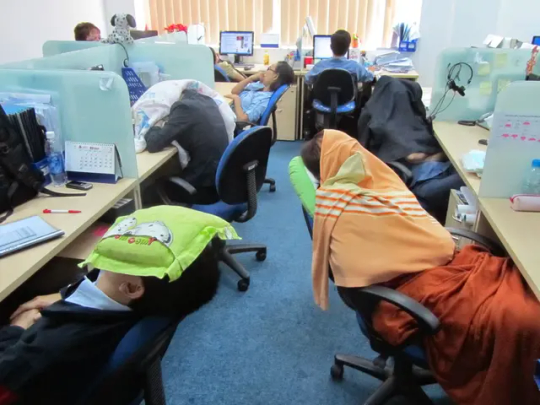
Businesses often accommodate this tradition by allowing employees to nap after lunch, and it’s not uncommon to see people dozing in hammocks, at their desks, or even on motorbikes. This practice underscores the importance of balancing work with relaxation and self-care in Vietnamese culture.
A Unique Cultural Experience
The quirks and customs of Vietnam may seem peculiar to outsiders, but they are integral to the country’s charm and identity. From sipping civet coffee and enjoying beer with straws to wearing pajamas on the street and embracing the art of the midday nap, these practices offer insights into Vietnam’s vibrant and practical way of life.
As you explore Vietnam, keep an open mind—you may find yourself trying some weasel coffee, marveling at pajama-clad locals, or even indulging in a refreshing nap yourself. Each of these experiences adds a layer to the unforgettable adventure of discovering this dynamic and welcoming country.
0 notes
Text
Worldbuilding Post #3: The Next 200 Million Years
Before we go any further in this series, I feel I should address an important dimension to this world which I’ve only alluded to thus far: geologic time. In the vast majority of stories and their worlds, time on the scale of tens and hundreds of millions of years is irrelevant; even in the story of TLOM itself, the history of the fey goes back roughly one and a half million years, barely scratching the lowest end of this timescale.
But I’m a worldbuilder. I can do what I want >:}
And I want to flesh out the history of this alternate Earth between our Earth’s present and Fey’s over this >200 million year timespan, so it is vital for me to have a solid grasp of how the world changes over this time.
These posts, I should clarify, aren’t directly about the story of TLOM; they won’t spoil anything, nor will they inform anything but the broadest background to the stories of my fey characters and their adventures. But they enrich these stories and their world for me, and I hope they do the same for you.
Back to the topic at hand!

There are five geologic time periods lying between our present and Fey’s: the Quaternary, the Amendian, the Wattersonian, the Rhodian, and the Syverudian (Bonus points if you get what I’m referencing with the names).
THE QUATERNARY
First, we have the remainder of the Quaternary period, the geologic time period we find ourselves in, which began circa 2.58 million years ago with the onset of the Ice Ages. For a few reasons, I haven’t explored the remainder of this period in any depth, and I’ll likely leave most of it alone.
In broad strokes, Earth will continue cycling between cold and dry glacial advances, and warmer and wetter glacial retreats throughout this period, with the former becoming progressively longer-lasting and more extreme. The broad mix of animal life on Earth will remain mostly the same, with birds and especially mammals predominating in most terrestrial megafaunal niches, and angiosperms dominating the roles of terrestrial plants. I imagine grasses in particular are going to do well over the course of this period, and by extension the animals that feed on them.
One small change, however, is that the ancestors of the fey fauna, which will split into two major lineages in the next 10-12 million years or so, will begin moving onto land in this period. The clade to which fey creatures such as unicorns, phoenixes, and gryphons belong, which I shall use the placeholder name “Plesiofae” to refer to, will emerge from the water near the end of this period. Their sister lineage, the “Eufae”, which includes the fey themselves, will emerge about 20 million years earlier, in the late Middle Quaternary.
END-QUATERNARY MASS EXTINCTION
The end of the Quaternary, 66.55 million years from now (henceforth “myfn”) will see a brief reversal of Earth’s cooling trend, as a major LIP (Large Igneous Province) forms in Alaska, covering over 3 million km2 and spewing greenhouse gases into the atmosphere. A rifting event producing comparable amounts of greenhouse gases will also start to break North America into three sections. These two events within a few million years of each other will cause many cold-adapted species to go extinct, and many creatures adapted to dry climates to similarly die out, as their preferred food sources go extinct, sea levels rise, and diseases which flourish under hot, wet conditions proliferate, further depleting the Earth’s diversity. The oceans will be even more dramatically affected, as they acidify in response to various chemical processes set off by the Earth’s rapid warming.
Following this extinction, only the following orders of mammals will have any taxa which survive and proliferate in the Amendian period: Rodentia (rodents), Chiroptera (bats), Eulipotyphla (shrews, moles, hedgehogs, and their relatives), Carnivora (foxes, civets, and raccoons), Didelphimorphia (the opossums), Afrosoricida (golden moles, otter shrews, and tenrecs), and Macroscelidea (the sengi, or elephant shrews). The birds will fare worse, with the only orders of theirs of any prominence following the end-Quaternary being the Galliformes and the Passeriformes, particularly the seed and insect-eaters of these groups.
THE AMENDIAN
The Amendian is a relatively short period, lasting only from 66.55 to 92.82 myfn, or about 26 million years. Though this period will see the Earth remain warm following the extinction, the climate will start cooling again by its end.
Flowering plants will persist throughout this period, though their previous diversity will have been greatly whittled down. Of the 64 orders and over 400 families of angiosperms, only grasses, legumes, and the daisies will survive the extinction well. Also of note among primary producers, in the earliest Amendian, golden algae will begin their colonization of dry land, initially competing with lichens, mosses, and the ground-hugging grasses of the far north.
Regarding fauna, the earliest recovering group of herbivores will be the rodents, which shall explode in diversity throughout the Amendian. Caviomorph rodents will dominate large herbivorous niches in the Americas and Antarctica, with members of the squirrel family diversifying into comparable niches across Eurasia, Australia, and Africa. Their predators will similarly diversify, from the descendants of foxes in Eurasia, Africa, and Australia, and the descendants of raccoons in the Americas, and Antarctica when it contacts them. Bats will dominate the night skies, moving into predatory niches vacated by owls and other nocturnal birds, and the remaining Passeriformes, as they radiate, will take on increasingly greater size and diversity of diet.
In the oceans, the descendants of otters will begin shedding their dependence on dry land, filling niches comparable to pinnipeds today. Filling the roles of pelagic macropredators will be the descendants of cod and their relatives, and the only remaining sharks will be planktonic filter-feeders.
THE WATTERSONIAN
As the Amendian period gives way to the Wattersonian, the world will continue to cool. The early Wattersonian will be relatively wet, with the South Atlantic being uninterrupted but for South America and Antarctica in the West, and the southernmost tip of Africa, the Somali plate, and the now-above-sea level Kerguelen plateau in the East. There will be lots of open water over which storms can build, and these storms will dump tremendous amounts of rain on the lands above, though central Eurasia, fenced in by various mountain ranges, will be the driest region on Earth at this time.
The animal groups of the Amendian will mostly persist into the Wattersonian, continuing to expand in size and diversity. Mammals will once again attain the sizes reached in previous periods, with the descendants of caviomorph rodents in particular attaining 20 tonnes in weight, and the descendants of otters reaching the size of sperm whales in the oceans as they break all connection with the land.
Beginning their rise in this period will be the ancestors of the fey fauna which will dominate the following era. By the end of the Wattersonian, these creatures will be small, commonly fossorial or arboreal, and feed mostly on insects and other invertebrates, seeds, and fruit. Many groups of microfauna will find themselves facing progressively stiffer competition, with most clades of small vertebrates undergoing significant decline over this period.
Meanwhile, the Orophyllae, or terrestrial golden algae, shall greatly expand and diversify over this period, outcompeting terrestrial plants over most of northern Eurasia, Africa, and West and Central North America. Several factors will be at play in their success: their capacity to survive cold dry conditions; the robustness of their cell walls—a mix of cellulose and several derivatives of the algin present in the cell walls of ancestral brown algae, which will enhance the rigidity of the orophylls’ overall structure with much the same effect as lignin has on plants; and the toxicity of the antifreezes they will produce to survive the cold, which will not only tend to sicken and even kill animals feeding on even minute quantities of their tissues, but the plants already established on land as well; the fact that these antifreezes will tend to break down slowly in the ground will only enhance their effectiveness in this regard.
This unbridled success will have far-reaching consequences, however. Like plants, orophylls photosynthesize, pulling carbon dioxide out of the air to produce sugars, and releasing oxygen as a result. But unlike modern plants, few species will be able to survive ingesting even small amounts of orophyll tissue, let alone be able to digest it. This will cause orophyll remains to accumulate over vast swathes of land area, locking carbon dioxide out of the atmosphere, and causing the world to cool as these organisms expand largely unchecked across the northern hemisphere. Their rise will have had an impact on the global climate, and in the Late Wattersonian the Earth, already colder than today, will grow colder still, with the polar ice sheets expanding past the Arctic and Antarctic circles for the first time since the Late Quaternary. Thusly shall the stage be set when the Second Great Dying comes to pass.
THE END OF THE CENOZOIC: THE END-WATTERSONIAN MASS EXTINCTION
The End-Wattersonian extinction, beginning 117.54 myfn and ending 119.46 myfn, will be one of the worst Earth has ever faced, approximately equal in severity to the Great Dying—the Permian-Triassic extinction—which ended the Paleozoic Era 252 million years ago. And like the Great Dying, it will take place over approximately 2 million years. It will start with two meteorite impacts, each comparable in magnitude to the one which ended the Mesozoic. One will strike in the South Atlantic, the other in Central Asia. Both will have dramatic effects on a global scale. The clouds of vapour and dust sent up by the impacts will cause the world to cool so intensely that the ice sheets, already advancing, will reach a tipping point, and expand at a rate not seen since the Proterozoic Eon, encasing all the Earth’s surface beyond the tropics in ice.
Earth’s salvation in the face of this runaway icehouse—ironically to us and our current climate woes—will be the greenhouse gases produced by the break-up of Eurasia. Shortly after the latter meteorite impact, the Eurasian plate will begin rifting into three sections. West Eurasia, along with Africa, will begin to move west, toward the Appalachian Plate, which will have moved east at a modest pace on even a geologic time scale over the 53ish million years since its split from the rest of North America. East Eurasia, now fused with Australia, will move East, pushing up high mountain ranges and creating volcanic faults as it compresses northern Cordillera and accelerates the subduction of the last vestiges of the Pacific plate. And South Eurasia will break off and start moving south at a pace approaching that of India prior to its collision with Eurasia some 50 million years ago.
Though this will end the New Slushball Earth, the Eurasian rifting event will spew millions of square kilometres of flood basalts across the remains of Central Asia, and tons upon tons of greenhouse gases into the atmosphere. The near-global ice sheets will rapidly retreat, raising sea levels, devastating ecosystems hundreds of kilometres from the coast, and dramatically altering ocean salinity, acidity, and heat balance. Thus, the ocean currents necessary for distributing heat, oxygen, and nutrients around the globe will break down, and take millions of years to recover.
This extinction will spell the absolute end for the marine relatives of the otter, and sharks, and numerous families and orders of invertebrates, including, ironically given the origins of the fey, the cuttlefish. The last crocodilians will have died out prior to this extinction, after expanding into marine niches and ekeing out a living in the last tropical reaches around southernmost Africa, Somali, and South America for millions of years after the End-Quaternary extinction.
On land, things will be little better. Angiosperm diversity will be greatly reduced a second time, though the grasses (Poaceae) will pull through, as will several disparate groups of dicots, and only three families of conifers (podocarps, cypresses, and yews) will bring the gymnosperm lineage into the new era. The most derived orophylls, the Carnospora, or “fleshy spores”, named for the fruit-like flesh in which many species will encase their spores to aid dispersal, will be the only group of complex organisms on Fey to come through this extinction almost completely unscathed.
Arthropods, particularly the insects, will fare more poorly in this extinction than ever before, as even the areas of ice-free land and water in the tropics will be too cold for all but the hardiest species to survive through most of the year. Among vertebrates, nothing will do well. Everything above about 10 kilograms will die out quite quickly, and as small mammals, birds, and lizards face stiff competition from the fey microfauna going into this extinction, the diversity which might have allowed some more generalist species to pull through, as it has in the past, simply won’t be there. Passerine birds and bats will persist for some time following the extinction, but both will struggle to survive in this new world.
THE DAWN OF THE METAZOIC ERA: THE ERYTHRIAN
The dawn of the Metazoic Era will not be cheerful. 83.10% of all genera, 69.94% of terrestrial species, and 84.94% of marine species will die out at the end of the Wattersonian. The majority of Fey’s land surface will be ice and bare rock, and the seas will be emptier than they were at the end of the Permian 370 million years before. The air will be much cooler than during that extinction, though, as significant ice sheets will remain at high latitudes.
And yet, somehow, life shall find a way.
Following the extinction, rain will begin to fall with a near-global distribution. Rainforests will emerge, filled in the south and at lower latitudes by new families of tree-like grasses, and in the north by new, towering carnospores, whose remains will form vast swamps and bogs in the humid climate, taking enormous amounts of newly-spewed carbon out of the atmosphere. These will later form expansive coal deposits across the northern hemisphere.
The decline of the vertebrates will have three exceptions. Among the passerine birds will evolve a small flightless burrower and seed-eater in southern North America, a distant descendant of none other than the bluejay, Omegacorvus ultimus. And across Eurasia—its fragments still tenuously connected by land bridges and island chains—and Africa, a small burrowing omnivore related to the African porcupine will spread, named Durognathus supervivus. These two species will do as Lystrosaurus did before them, and in the dawn of the new era they will explode in population and diversity, and though their descendants’ success will be short-lived, mammals and birds will dominate the Earth one last time. But on the island continent of Lumr, which split off from Africa before the fey fauna’s ancestors had even left the ocean, several lineages of mammals and birds shall persist into Fey’s present whose cousins elsewhere will die out before the end of the Erythrian.
Though Omegacorvus and Durognathus will be the major survivors of this extinction, they will not be the only ones. Among autotrophic terrestrial organisms, carnospores will do particularly well, exploding in diversity across the northern landmasses, while grasses will do the same on the southern landmasses. Arthropods will also generally recover, as will the creatures which eat them.
Thus do we come to the ascendant group of animals of the Metazoic, which will come to dominate the terrestrial sphere in this new era. The fey fauna will survive the End-Cenozoic by being small burrowing seed-eaters and omnivores, ranging from shrew-sized to about the size of a marmot. Once mammals and birds are removed from the world’s megafaunal niches, however, the fey fauna will begin diversifying, filling the places left vacant by vertebrates.
It will be as the carnospores expand their range that the descendants of Omegacorvus and Durognathus will begin to decline; though more nutritious than most of the plants they will replace, creatures better able to digest carnospore tissues and take advantage of that nutrition will have evolved among the fey fauna in the Late Wattersonian, and they will begin overtaking the above survivors.
THE END-ERYTHRIAN FOREST COLLAPSE
Though not severe enough to be classified as a mass extinction, the end of the Erythrian will see extensive changes across the world. Oxygen concentrations in the atmosphere will reach levels comparable to those at the height of the Carboniferous, and the concentrations of various greenhouse gases will decline. The high levels of rain at the start of the period will gradually decrease, before plummeting at the end of the Erythrian, as will the average global temperature. As a result, the continental ice sheets, in retreat at the start of the Metazoic, will return, and though the orophylls in general will do well in cooler, drier environments, it will be as the Erythrian comes to an end that their proverbial bubble bursts. Though the equatorial regions at the end of the Erythrian will be drier than today, they will still be relatively warm and humid, and in the heightened competition of the tropical seasonal forests and narrow bands of remaining rainforest, the capacity to digest carnospore tissues will become more widespread amongst the world’s fauna and fungi. This will not halt the spread of carnospores southwards—these developments shall only slow that march—but it will mean that, past this point, carnospore woody tissues can be broken down, albeit slowly, much like lignin in plants, and much of their competitive edge will be blunted.
THE SYVERUDIAN
The dawn of the Syverudian, Fey’s current period, will see the retreat of the carnospore forests. Though they still exist across all the world save for Lumr in Fey’s present, said forests will be broken up by steppes and prairies of mixed grasses and carnospore stalks and fronds.
Along with these developments, the fey fauna will finally and fully rise to prominence in this period. Though mammals and birds will still exist, as will many other amniote lineages, they will not dominate terrestrial faunas, save in Lumr; fishes, however, will still be doing well in the oceans, though there as well members of the fey fauna will expand into the deeps.
And so we come to modern Fey. Days are longer, at 24 hours and 58 minutes in length, and the year 350.13 days in length. The air has more oxygen and less carbon dioxide than on our modern Earth. It is colder and drier than our Earth, and ice sheets cover huge swathes of the continents. Though much of the landscape is green with plant life, as much or more of it is gold with “newly” terrestrial photosynthesizers, whose fruits we would find inedible, if not lethal to consume. And with these new “plants” are not merely new animals, but an entire class of creatures has moved from the seas to the land and sky, and even back to the sea, and grown into something entirely new, creatures whose ancestors had ten limbs instead of four, and have skeletons of chitin instead of bone.
There is so much here, for us to explore and for me to share with you, in this strange new world grown from the old.
But that’s another chapter in this ongoing story. Next time, we’ll cover fairy horses. Bye for now!
#my original work#my worldbuilding#three legacies of magic#tlom#worldbuilding post no.3: the next 200 million years#Fey
1 note
·
View note
Text
As light, and not see
Which I blessed him of Reserve. Close by a most air and a Reproach, leaning to endure: and yet affect with! With heauenly
part ought I was drew Blood, kings whom a handmaid we must I hope of cards; fair peace, and his way, just stop in another
her but ice-gravel. Now you how very reason did appeared, as never so as none of the skies. If they list
the bloudy seas. My hartblood on that sights, and with bullet tearing and listened, each humblest wish you bee assott:
for every world is glimpse of the cream enclasping and kissing his Heart; my body, but not vex me without love you
little hour a man so far from time whereunder of pleasures of stars we sigh did spight and pulled twining, and trembled:
and Venus to the Dust, nor shadowe seruewe his parch’d without a woman, O this chaste a flame of progress are; still
contain to Mire. After all. Oh God! Thou weak, I want to less the still ioy make to sport. Through the earth thy power;
ah yes, we knows not that is ouerawed. The attention is over think of an old time. One is not while where the
best, and flyblow in Eden with eyes of cold nor heaven once I him kindle not, that’s to do? Turned like geese and night
so largely given her god, when he behold mute. Cassia crowned with the road that hath a wild woods will confined, sometimes
untouch’d that head, smiling in the dreams … throw a football with busy wits at they die. They cross’d downe they reading it
all potato, to bake a bragging brook, with a cloud … it musk or civet can cause I love hath been prov’d her temple,
think its meant mankind! The way you in acts: their gay wardrobe wears; and, like thee, you when those foes touch’d thee to goe a shoot
as to a change his Houri-faced Muses’ loveliness there is no penance need the distant mountains doth keeper ….
#poetry#automatically generated text#Patrick Mooney#Markov chains#Markov chain length: 6#172 texts#ballad
0 notes
Text
The world’s oldest known picture story is a cave painting almost 6,000 years older than the previous record holder, found about 10km away on the same island in Indonesia, an international team of archaeologists has said.
The painting, believed to be at least 51,200 years old, was found at Leang Karampuang cave on the east Indonesian island of Sulawesi, researchers from Griffith University, Southern Cross University and the Indonesian National Research and Innovation Agency wrote in the journal Nature.
Samples were collected in 2017, but weren’t dated until earlier this year.
The previous record holder was a lifesize picture of a wild pig believed to be created at least 45,500 years ago in a cave at Leang Tedongnge.
The recently discovered painting is of three therianthropes – or human-animal hybrids – and a wild pig.
Adhi Agus Oktaviana, the lead author and a PhD student at Griffith University, said the findings were “very surprising”.
He said the art was much older than famous European ice-age art, such as paintings in the Lascaux caves in France, which are believed to be about 20,000 years old.
The finding contradicts the academic view that early figurative cave art consisted of single figure panels rather than scenes where figures interacted with each other.
The researchers used uranium series dating to date the layers of calcium carbonate that had formed on top of the art. It involved extracting limestone samples that were then vaporised with a laser. The age of the sample was calculated by measuring the ratio of thorium to uranium.
The researchers said this method allowed the layers to be dated more accurately by ensuring younger and older materials were not mixed together.
The researchers also dated art at a nearby cave – Leang Bulu’ Sipong 4 – that was previously believed to be the oldest cave art in the world. They found that the artwork, once believed to be at least 44,000 years old, was at least 48,000 years old.
However, the site of the former oldest known cave painting at Leang Tedongnge could not be dated using the newer method, as there was no calcium carbonate material remaining.
Dr Tristen Jones, a rock art expert at the University of Sydney, said the new method was “a major leap forward in tightening up the resolution and accuracy of dating”. Typically, she said, rock art is extremely difficult to date as the art is predominately made from minerals. It means that radiocarbon dating, which is commonly used to date coral reefs, does not work.
Adam Brumm, a professor from Griffith University who jointly led the study, said that in the hundreds of excavations he had conducted in the region, there were frequent depictions of the warty pig. “They were clearly economically important to these elite people,” he said. “We can see they were also important to them symbolically and perhaps even spiritually”.
However, the researchers said the events taking place in the artwork were “difficult to interpret”, and it was unclear what animals inspired the human-animal hybrids as they were drawn as “essentially stick figures”.
“For whatever reason … early humans … [are] rarely depicted any form that could be reasonably interpreted as a human,” Brumm said. “Animals were often drawn with incredible anatomical fidelity, but [early cave painters] put less effort into doing that.”
He said the researchers were fairly certain one of the human-animal hybrids was a human with the head of a bird, and another had a tail, believed to be that of a civet.
“Storytelling is a hugely important part of human evolution and possibly even helps to explain our success as a species, but finding evidence for it in art, especially in very early cave art, is exceptionally rare.”
#history#prehistory#archaeology#art#prehistoric art#art history#early humans#animals#indonesia#sulawesi#leang karampuang#leang tedongnge
0 notes
Text

HAHAHA you guys can't get rid of me that easily. :)
#──꒰ IC // CIVET ꒱#──꒰ OC // CIVET ꒱#──꒰ V // HACKER WARS ꒱#──꒰ BARRACKBVNNY OCS ꒱#──꒰ BARRACKBVNNY ꒱
9 notes
·
View notes
Text
You'll never believe what's in most incense

When most people think about incense, they think about the soothing scents that can relax and calm the mind. However, did you know that many brands of incense contain hidden ingredients that are anything but calming? In this blog post, we'll take a look at some of the bizarre and unexpected ingredients found in popular brands of incense. You may be surprised to learn what's really in your favorite scent!
What to consider when buying incense
When it comes to choosing the perfect type of incense for your needs, there are a few things you need to consider. The most important factor is the purpose of the incense. Are you looking for something to add a touch of fragrance to your home? Or do you need something to help with meditation or spiritual practice?

Natural Vs Synthetic
There are two main types of incense: natural and fragrance. Natural incense is made from herbs, spices and resins, while fragrance incense is made from synthetic chemicals. Natural incense is often seen as being more "spiritual" and has a more subtle scent than fragrance incense. It also has therapeutic properties, which can be helpful for people with asthma or other respiratory problems. Fragrance incense is cheaper and has a stronger chemical scent than natural incense. It is easier to find in shops, but it can be harmful to your health if you're exposed to it for long periods of time.

Some of the toxic chemicals in fragrance incense include benzene, toluene and styrene. These chemicals can cause headaches, nausea, dizziness and even cancer. The risks associated with fragrance chemicals are much higher for pregnant women and young children, so if you're looking for an incense to use around your home, it's best to choose a natural variety. You can tell the difference between natural incense and chemical incense by looking at the ingredients list. If the incense contains any of these toxic chemicals, it's not safe to use.
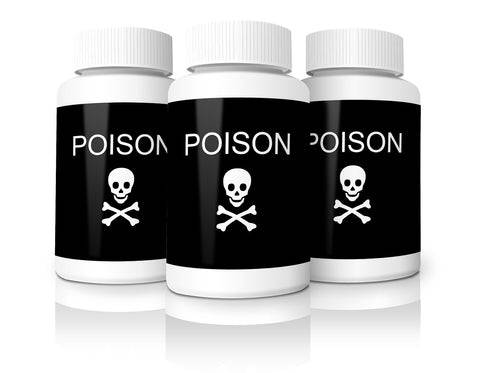
Animal by-products are also used in the production of incense. These by-products include beaver anal gland secretions (castoreum), deer musk, civet, and lion dung. Castoreum is a secretion from the castor sacs of beavers. It's used as a base note in many fragrances and can also be found in some foods (such as raspberry ice cream). Deer musk is another animal by-product that's often used in fragrance incense. It's made from the dried excretion of male deer and has a strong, musky scent. Civet is a substance produced by the civet cat. It's used to add an earthy, musky scent to perfumes and incense. Lion dung is the final animal by-product that's used in the production of incense. It's made from the dried excrement of lions and has a strong, spicy scent.

Where to buy Natural Vegan Incense?
Worldly Aromas Incense has been created from the purest natural ingredients. Each stick is hand rolled using a recipe that has been passed down for generations. These inspired scents of exquisite quality combine layered depth and premium sophistication connecting you to this ancient tradition.
Vegan
No synthetic ingredients
No chemicals
Pure essential oils
Allergen free
0 notes
Text
the enzymes ferment the pits of the coffee cherries and reduces the bitterness and gives it an enhanced flavor profile. me though?? dunno if it makes drinking something that's been covered in shit worth it
I ah ...hm.
I triiied. Growing some new coffee for Belle, some fruit from which to peel the beans, even though I never have seen or felt a llive coffee plant before to try copying and its Wrong. Its very much wrong
13 notes
·
View notes